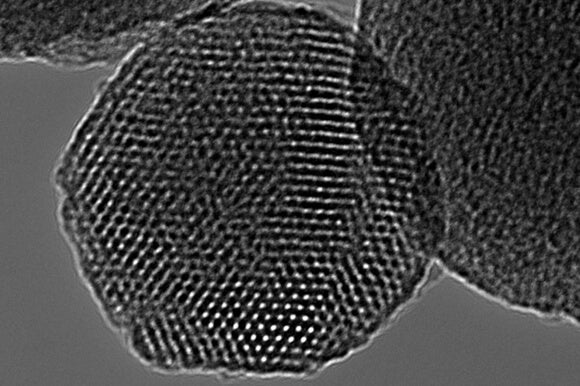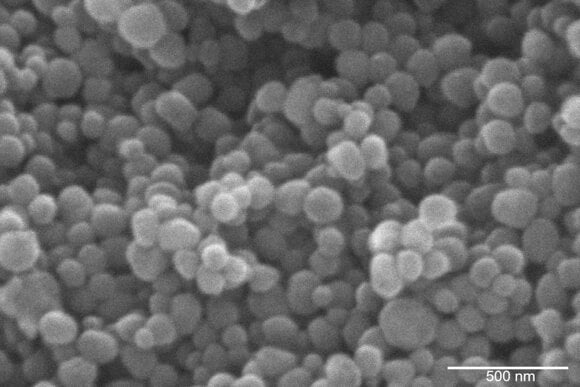Magnetically Guided Nanoparticles to Target and Destroy Diseased Cells

Share
Currently, we take the shotgun approach to treatments for diseases like cancer. The body is indiscriminately bombarded with drugs and radiation harmful to diseased and healthy cells alike. While we may not cure cancer right away, researchers are trying to develop new ways to more carefully image and destroy diseased cells.
In a recent journal article, scientists at Rice University and the Methodist Hospital Research Institute said experimental nanoparticles impregnated with iron oxide may improve MRI imaging techniques and even be used to treat diseased tissue.

The researchers made two nanoconstructs, embedding iron oxide particles in silicon mesoporous particles (SiMPs), pictured at the top of the page and above, and discoidal polymeric nanoconstructs (DPNs).
The iron oxide allows researchers to magnetically move the nanoparticles to desired locations and hold them there. Further, when embedded in the larger nanoparticles, the imaging efficacy of iron oxide—already used as an MRI contrast agent—proved to be 10 times better with a lower dose of iron than traditional contrast agents.
Be Part of the Future
Sign up to receive top stories about groundbreaking technologies and visionary thinkers from SingularityHub.


Beyond manipulation and imaging, such particles may also be used therapeutically. Once in place, for example, the iron-infused nanoparticles can be heated to destroy target cells. Also, each particle can carry drugs in pores situated throughout its surface. Once guided to a specific area, it can be induced to release a drug—sparing as many healthy cells as possible while destroying diseased tissue.
What happens to the nanoparticles after they’ve served their purpose? According to the researchers, they should fully degrade and exit the body within a few days.
Read more at Science Daily: Nanoscale composites improve MRI: Magnetic particles merged to detect, fight disease
[Image Credit: Dr. Victor Lin group/Iowa State University/Wikimedia Commons (banner and body)]
I enjoy all types of futurology. I especially enjoy staying up to date with the latest advancements in machine learning and artificial intelligence. You can usually find me roaming the depths of the internet.
Related Articles

One Dose of This Gene Editor Could Defeat a Host of Genetic Diseases Suffered by Millions

Groundbreaking Gene Therapy Transforms Life of Boy With Devastating Disorder

Scientists Say We Need a Circular Space Economy to Avoid Trashing Orbit
What we’re reading
